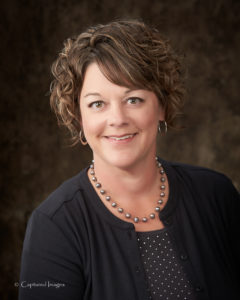
District Extension Agent, Horticulture
Southwind Extension District
111 S. Butler
Erie, KS 66733
Office: 620-244-3826
Cell: 620-496-8786
Even though the calendar says that we are only half-way through winter, the seed catalogs are telling us spring is just around the corner by the number of mailings they are sending out. I think I have already received six or seven!
I thoroughly enjoy flipping through the catalogs and planning what new plants I want to try this year. I’m sure many of you do the exactly the same. But do you understand all of the terminology that you see in seed catalogs? A clear understanding of the lingo used in the catalogs is needed so that you can be the most successful with your plantings.
When shopping for perennials, you will encounter the term “hardiness zone”. The United States (lower 48) is broken up into 8 hardiness zones based upon the lowest average winter temperature for the area. Southeast Kansas is located in zone 6. Knowing what zone your garden is in and seeing what zone the plant is hardy to will help you pick plants that will survive the winter. However, keep in mind that your individual planting areas might include a “microclimate.” A microclimate is an area that the soil, moisture, humidity, heat, wind or other conditions affect the viability of individual plants. So think about your planting site before ordering.
If you are looking at tomatoes, you will probably see the words determinant and indeterminate. These words refer to how large the plants get and how they grow. Determinant types tend to stay more compact and bushy. These are best suited for a smaller garden. Indeterminate types tend to get tall and just keep getting taller over the summer. If you want a tall plant to impress your neighbor, this is the one!
“Days to harvest” refers to the average number of days it usually takes after you set out transplants before you can expect your first harvest. This is highly variable and just because you count back the right number of days from the Fourth of July, doesn’t necessarily mean that you will have ripe tomatoes by then. I have a friend that ordered in an array of sunflower seeds last year in preparation for a September wedding. The “days to harvest” was supposed to be around 70-75 days. So, she counted back from the wedding date and planted accordingly. Unfortunately, they bloomed about day 52 thanks to high heat! It just goes to show us that Mother Nature always wins regardless of our planning.
Terms such as AAS (All American Selections) and Perennial Plant of the Year, indicate that those varieties have been trialed for many years in trial gardens through the United States and have been shown to be outstanding performers. They are often worthy of a place in the garden.
Looking for plants that have disease tolerance or disease resistance is good. But the two terms have different meanings. A plant listed as disease tolerant will probably get a disease common to the plant, but it may not be so bad that treatment is needed. The disease probably won’t affect the appearance much. Disease resistance means the plant has been bred to resist common disease problems and will probably not get the disease. One of the best examples of this is in roses. Some roses will be listed as disease resistant to black spot and then some will be listed as disease tolerant to black spot.
Seed catalogs can be somewhat overwhelming. But if you do your homework and know the lingo, you will be able to pick out the best suited plants for your garden.
If you have questions on variety selection as you browse through your catalogs, please contact me. I would be happy to visit with you.
Krista Harding is a K-State Research and Extension Agricultural agent assigned to Southwind District. She may be reached at kharding@ksu.edu or 620-244-3826.
K-State Research and Extension is an equal opportunity provider and employer.
